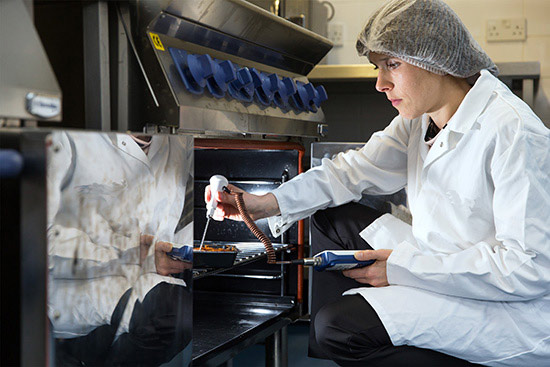Have you ever stopped and wondered how the manufacturer of your ready meal came up with the reheating instructions for your tea?
Cooking and reheating instructions on the back of pack are important to make sure that the product is safe to eat and tastes the best it can. Inadequate reheating instructions may lead to it being underheated, resulting in the product being too cold or even worse a cause of food poisoning, or overheated, resulting in the product quality becoming unappetising.
There is a legal requirement for cooking or reheating instructions to be provided if they are needed for the consumer to correctly use the product.
During the development of the product, food technologists will look at:
- The formulation of the product - a product that is meant to be reheated in a conventional oven may have a different recipe formulation to one which is intended to be reheated in a microwave.
- The packaging materials and the shape of the pack are designed to allow efficient, even heating and be suitable for handling afterwards. As well as withstanding reheating, the packaging must be strong enough to protect and preserve the product through the supply chain from the factory to our homes.

Keeping it safe…
The target temperature that we are aiming for at the end of reheating depends on whether the food can be classed as safe to eat without further heating or whether it needs to be reheated to kill any possible food poisoning bacteria that may have recontaminated or grown on the food. Reheating must be sufficient to destroy any of these bacteria and to do this requires the product to be heated to a high enough temperature for a suitable length of time.
In a product there is always an area that is the slowest to heat up, this is called a “cold spot”. To ensure a product is thoroughly heated, this cold spot must be heated to an equivalent of 70°c for 2 minutes (alternatively, this can be achieved by higher temperatures for shorter times or lower temperatures for longer).
When developing instructions to give consumers guidance on the safe reheating of food, the food technologist needs to record both the temperature and time at that temperature. To measure this, equipment such as probes and electronic data loggers are used to monitor and measure the temperature of the food at given intervals. This data can then be analysed and the necessary heating instructions calculated to ensure that the product is safe to eat.
When writing the heating instructions, the technologist needs to look at:
- Is preheating the appliance required?
- Is the appliance appropriate and capable of heating the food?
- Is the packaging capable of being heated?
- What is the temperature setting?
- Will the food product be covered or uncovered?
- Do you need to turn or stir the product once, frequently or not at all?
- Do you need to leave the product to stand after heating?
As you can see, a lot of work goes into making sure your ready meal is safe and tastes the best it can.
